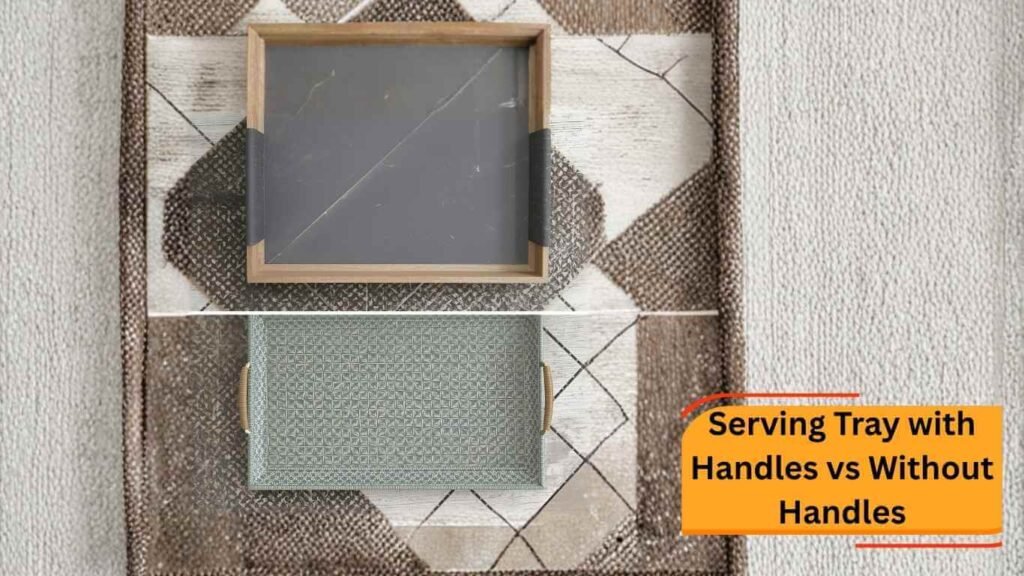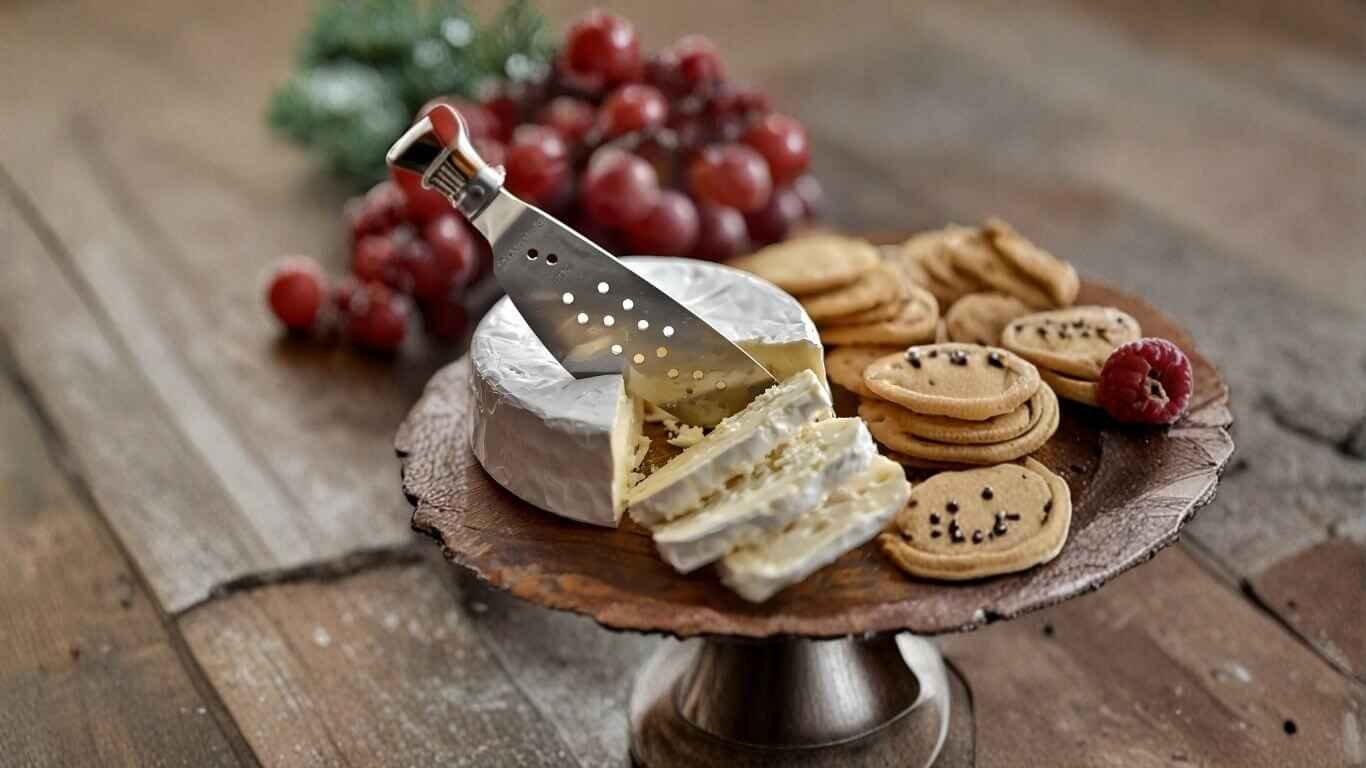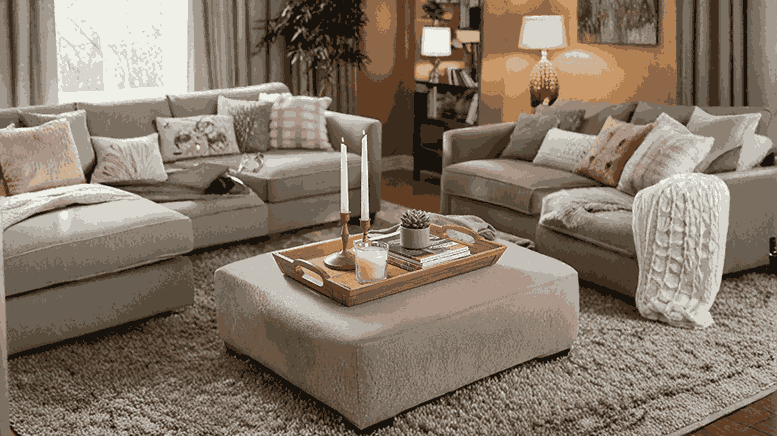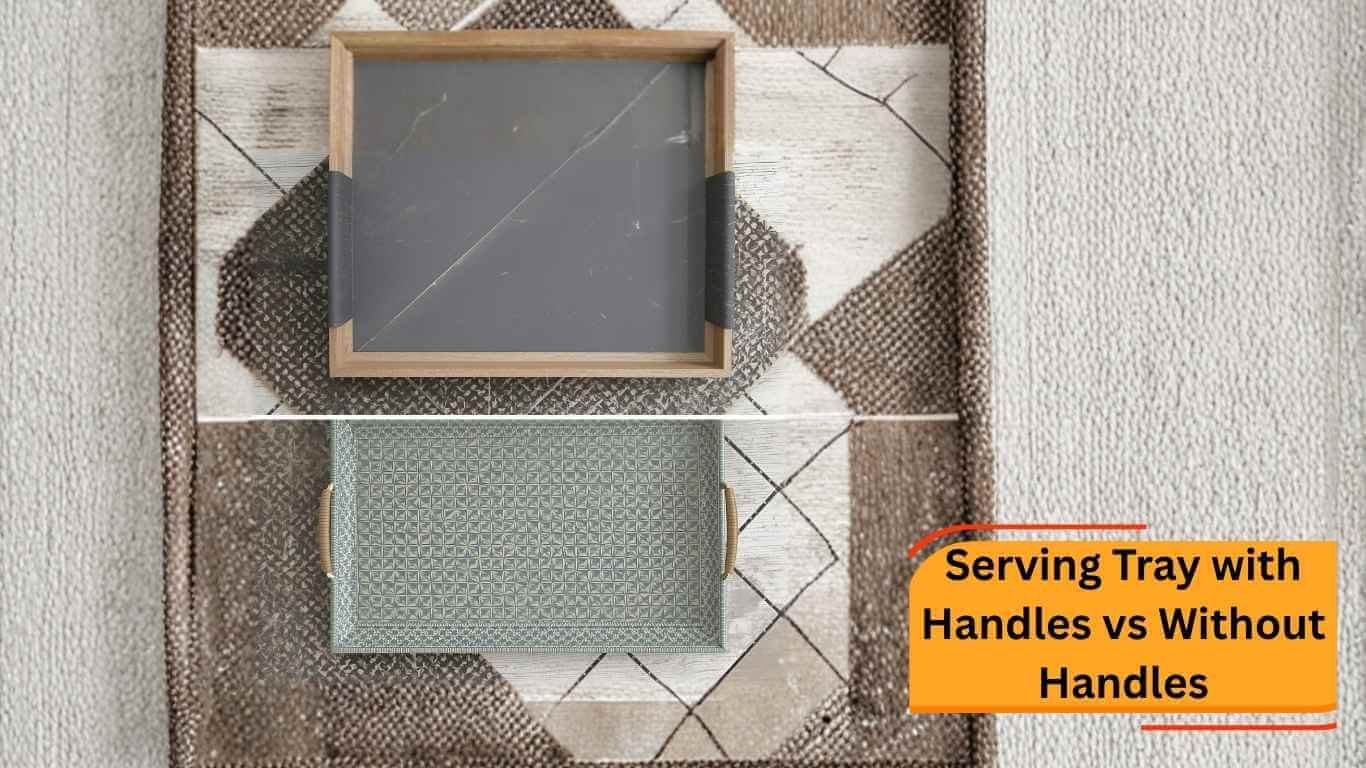We’ve all been there. You’re hosting a brunch, and the mimosas are ready. You’re trying to bring snacks out to the patio. Or maybe, you’re just trying to finally wrangle the remote controls, coasters, and magazines on your coffee table. You reach for a serving tray, and that’s when you face the classic home décor dilemma: function or form?
Not all trays are created equal. This is the core of the serving tray with handles vs without handles debate. One is built for convenient carrying, the other for clean, minimalist style.
It’s a small detail that makes a big difference in how you live in your home. By the end of this article, you’ll be able to confidently choose the best serving tray style that perfectly fits your space and your lifestyle.
Overview: What’s the Difference?
Before we dive into the pros and cons, let’s get the simple definitions out of the way.
- Serving Trays with Handles: These are trays designed with built-in grips be it loops, cut-outs, or raised edges. Their primary purpose is transport. They are built to move things from point A to point B safely and easily.
- Serving Trays without Handles: These are often flat, minimalist platforms. Their design prioritizes a sleek, uninterrupted surface. They excel as a “base” or “stage” for organizing and displaying items, or for serving in a stationary spot.
Think of it like choosing between sneakers and loafers. Both are stylish and serve a purpose, but you probably wouldn’t wear loafers for a long run. It’s not about which tray is better, but which is the right tool for the job.
Pros and Cons of Serving Trays with Handles
Trays with handles are the workhorses of the serving world. They are all about practicality, safety, and making your life as a host just a little bit easier.
Advantages
- Superior Portability: This is the number one benefit. Whether you’re carrying a full teapot and cups, a round of cocktails, or dinner plates, handles give you a secure grip.
- Safety and Stability: A firm grip means less chance of tilting, slipping, or spilling. When you’re navigating stairs, doorways, or a crowded room, handles provide crucial stability.
- Versatility: This is the ideal tray for true serving. It’s perfect for breakfast in bed, outdoor entertaining on the patio, or clearing dishes after a meal.
- Family-Friendly: If you have kids wanting to help carry their own snacks or are serving an elderly relative, handles make the tray more accessible and easier for less-steady hands to manage.
Disadvantages
- Bulkier Aesthetic: Handles, by their nature, add visual weight and break up the clean lines of a tray. They can sometimes look more functional than fashionable.
- Storage Challenges: Trays with raised handles don’t stack neatly. They can take up more awkward space in a cabinet or pantry.
- Design Limitations: While many handled trays are beautiful, the design often has to work around the handle, which can limit the minimalist appeal.
Expert Tip: If you love hosting dinner parties or dream of serving breakfast in bed, a tray with sturdy handles is your best friend. The peace of mind it offers is worth any slight compromise in sleekness.
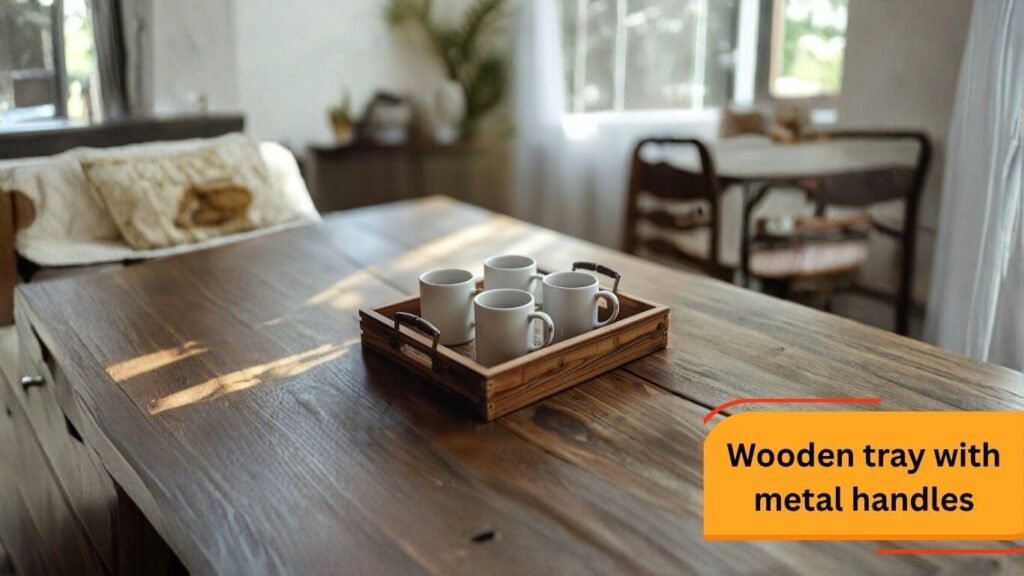
Pros and Cons of Serving Trays without Handles
Handleless trays are the darlings of interior design. They are loved for their clean, modern aesthetic and their ability to make any collection of items look intentional and stylish.
Advantages
- Sleek, Minimalist Look: This is their biggest selling point. A handleless tray offers a clean, uninterrupted surface that feels modern and elegant. It blends seamlessly into your décor.
- Perfect for Styling: They are the ultimate décor tool. Use one on a coffee table to “corral” candles, books, and a small plant. Use a small marble one on a vanity for perfumes or on a kitchen counter for oil and vinegar.
- Easy to Store: With no protruding parts, handleless trays are simple to stack, slide into a narrow cabinet, or stand on their side.
Disadvantages
- Difficult to Carry: This is the obvious drawback. You have to grip the tray from the bottom or by its edges, which is awkward and insecure, especially if it’s loaded.
- High Risk of Spills: Because the grip is less stable, the tray is easier to tilt. Carrying a full-to-the-brim coffee mug on a handleless tray is a game of chance.
- Limited for Serving: These trays are not ideal for moving food or drinks over long distances. They are best for stationary use or for carrying one or two light, stable items.
Expert Tip: Handleless trays shine in minimalist spaces or as décor accents. They are perfect for organizing and displaying items that are already in their final spot, not necessarily for heavy-duty serving.
Head-to-Head Comparison: Handles vs. No Handles
Let’s break down the serving tray with handles vs without handles matchup across the key factors that matter most.
Functionality & Use
This is the clearest distinction.
- With Handles: Wins for movement. Designed for securely carrying multiple items, heavy loads, and liquids from one room to another.
- Without Handles: Wins for stationary use. Designed to be a decorative base, an organizational tool, or for serving food that is already on a stable surface (like a charcuterie board on a dining table).
Design & Aesthetics
This comes down to personal taste.
- With Handles: Leans toward traditional, farmhouse, or practical aesthetics. However, modern designs with sleek metal handles or minimalist cut-outs can also look very chic.
- Without Handles: The clear choice for modern, minimalist, Scandinavian, and contemporary décor. The clean, flat surface is elegant and unobtrusive.
Material Options
Materials affect both styles, influencing weight, durability, and grip.
- Wood/Bamboo: Warm, versatile, and relatively lightweight. Handles are often cut directly into the wood, offering a secure grip.
- Metal: Can be sleek (brushed gold, matte black) or rustic (galvanized). Metal handles can sometimes be thin or sharp, so check for comfort.
- Marble: Heavy and luxurious. A large marble tray without handles is almost purely decorative, as it’s too heavy to carry safely. A marble tray with handles is a statement piece, but check that the handles are securely attached.
- Rattan/Wicker: Lightweight and perfect for a boho or coastal vibe. The woven texture often provides a good grip, even on handleless models.
- Acrylic/Lucite: Modern and clean. An acrylic tray without handles nearly disappears, while one with sleek, polished handles adds a touch of glam.
Cleaning & Maintenance
- With Handles: Can be slightly trickier. The crevices where the handle meets the tray base can trap crumbs or liquid. Cut-out handles are generally easier to clean than attached hardware.
- Without Handles: Almost always easier to clean. A simple, flat surface allows you to wipe it down in seconds.
Ideal Use Cases
Here’s a simple cheat sheet for when to use each:
| Purpose | Best Tray Type |
| Serving drinks (coffee, cocktails) | With Handles |
| Outdoor entertaining / Patio use | With Handles |
| Breakfast in bed | With Handles |
| Organizing a coffee table or ottoman | Both (Handles add stability on soft surfaces) |
| Decorative display (candles, vases) | Without Handles |
| Vanity tray for perfume/jewelry | Without Handles |
| Kitchen counter organization | Without Handles |
| Minimalist décor | Without Handles |
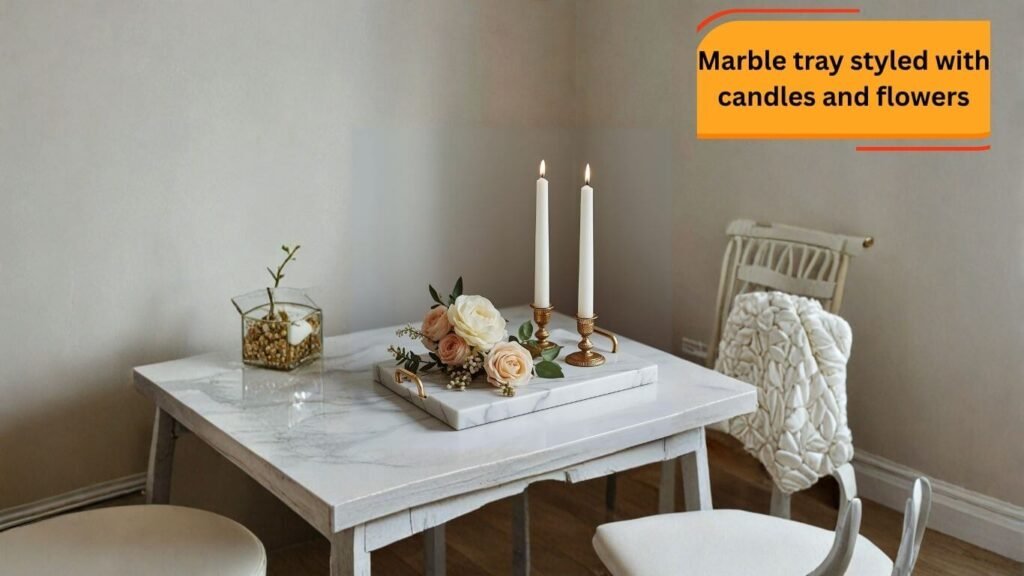
Expert Tips for Choosing the Right Tray
Still on the fence? As a lifestyle expert, I tell my clients to think about their real life, not just their dream home.
- Prioritize Your Primary Use: Be honest. Will you use this tray 90% of the time to corral remotes or 90% of the time to serve drinks? Buy for the 90%.
- Consider a Hybrid: You don’t always have to choose. Look for trays with “cut-out” handles or a raised “lip” edge. These offer a more secure grip than a completely flat tray but maintain a sleeker look than bulky, attached handles.
- Test the Feel: If you’re shopping in person, pick it up. Are the handles comfortable, or do they dig into your hands? Does the tray feel balanced, or is it flimsy?
- Watch the Weight: A tray that is too heavy before you even add items will never get used. This is especially true for marble and thick wooden trays.
- Match Material to Use: Getting a tray for the bathroom vanity? Avoid unsealed wood (it will warp). Using it for food? Make sure it’s a food-safe material or that you use a cloth liner.
Common Mistakes to Avoid
- Buying for Looks Alone: You buy a gorgeous, heavy, handleless marble tray. You try to serve cocktails on it once, nearly drop it, and it spends the rest of its life as a very expensive plant stand.
- The Fix: Be realistic. If it’s heavy and has no handles, it’s a décor piece, not a serving piece.
- Ignoring Handle Comfort: You grab a sleek metal tray with thin, square-edged handles. It looks great, but carrying more than two pounds feels awful.
- The Fix: Always test the grip. Rounded, smooth handles are universally more comfortable.
- Getting the Wrong Size: A tiny tray on a huge coffee table looks lost, while a massive tray on a small side table looks comical.
- The Fix: Measure your surface (coffee table, ottoman) before you buy. Aim for the tray to fill about one-third to one-half of the surface for a balanced look.
Frequently Asked Questions
Which is more practical – a serving tray with handles or without?
For the act of serving and carrying, a tray with handles is far more practical and secure. For stationary organizing or displaying, a handleless tray is just as practical, as it takes up less visual space.
Can handle less trays still be used for food?
Absolutely! They are perfect for presenting food that will be served in one place, like a charcuterie, cheese, or dessert board. Just assemble it where it will be displayed rather than carrying it a long distance.
Are trays with handles harder to clean?
They can be, slightly. You need to pay extra attention to the little crevices where the handle attaches to the tray. However, for most modern, well-made trays, a quick wipe-down is all that’s needed.
Conclusion
The great debate of serving tray with handles vs without handles doesn’t have a single winner. The best choice is the one that fits your home.
Here’s the simple takeaway:
- Choose handles if your primary need is function, convenience, and safety for carrying food and drinks.
- Choose no handles if your primary need is style, minimalism, and a clean platform for décor and organization.
Many homes find they need both a sturdy handled tray in the kitchen for hosting and a sleek handleless tray on the ottoman for daily style.
Ultimately, choose the one that complements your lifestyle, not just your décor. Whether you reach for convenience or clean lines, the right serving tray makes every meal or moment feel beautifully intentional.
